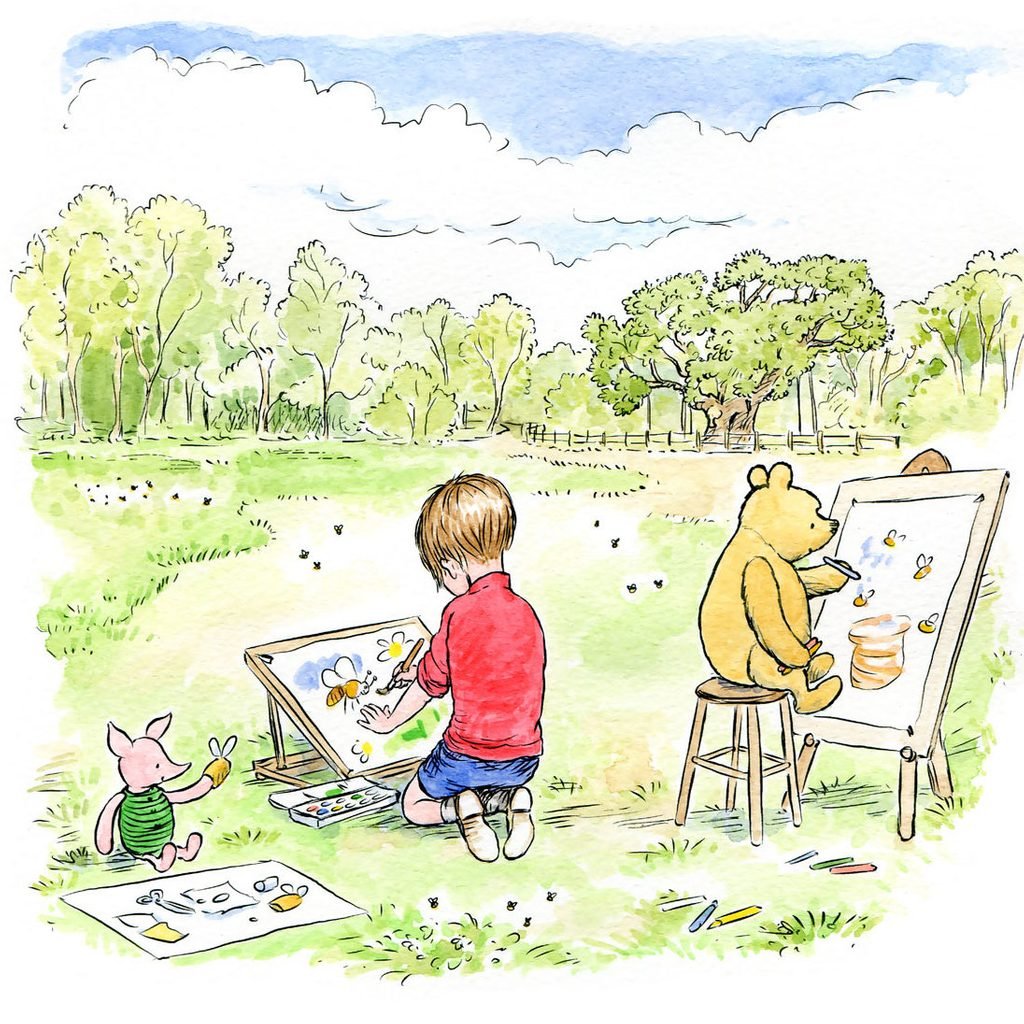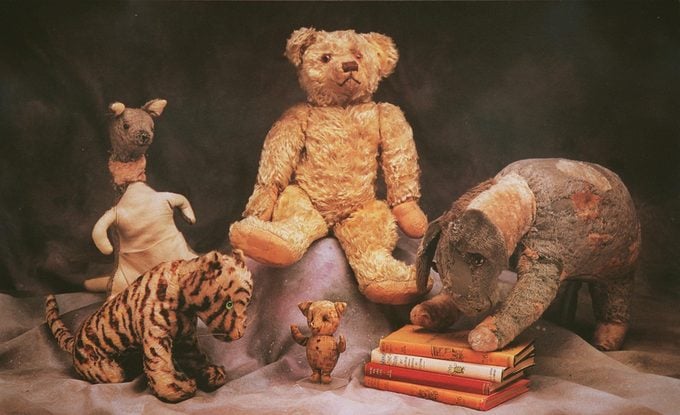See the Real-Life Toys That Inspired Beloved Winnie the Pooh Characters
Updated: Feb. 07, 2023

Though they no longer live in the Hundred Acre Wood, you can get up close and personal with the adorable friends.
A.A. Milne’s Winnie the Pooh books were an instant success. Following the horrors of World War I, the gentle, child-friendly stories featuring the residents of the Hundred Acre Wood were appealing to readers in Europe and America alike. Though we don’t typically think of fictional works with talking animals as being based in reality, there were real-life inspirations for Winnie the Pooh and his friends. Not only that, but you can visit them at the New York Public Library in New York City. Here’s how they got there, and how a collection of stuffed animals resulted in some of the most beloved children’s books of all time.
From the War to the Wood
Prior to serving in World War I, Milne was a playwright and humorist. But once he returned to England and became a father, he moved his family out of London and into a rural area, which became the inspiration for the Hundred Acre Wood. Milne and his son, Christopher Robin Milne, would take long walks in the woods together, and made frequent visits to the London Zoo to visit a gentle black bear named Winnie.
At this time, Christopher Robin—who went by “Billy Moon”—had a beloved stuffed bear. He originally named it “Edward” (the formal version of Teddy), but renamed it Winnie after his favorite animal at the zoo. (The “Pooh” came in because that’s what Christopher Robin would say when he tried to feed swans, but they would run away from him.) He loved his bear so much that he asked his father to write stories about him. After first appearing in a 1924 poem as “Mr. Edward Bear,” Winnie made his short story debut in the London Times in 1925, and then in a 1926 book.
The toys behind the story

Christopher Robin received Winnie the Pooh as a gift on his first birthday in 1921. His father had purchased the bear at Harrods department store in London. Between then and 1928, he received four other stuffed toys as gifts: a piglet (Piglet), a tiger (Tigger), a donkey (Eeyore), and a kangaroo (Kanga). Originally there was also a toy baby kangaroo (Roo), but it was lost in an apple orchard at some point in the 1930s.
The stuffed toys vary in height, ranging from 25″ (Eeyore) to 4.5″ (Piglet). They all appear to be worn—or rather, well-loved—not only because Christopher Robin cherished them, but the family dog played with them as well. When A.A. Milne started writing the Winnie the Pooh books, he teamed up with illustrator named Ernest H. Shepard, who drew each of Christopher Robin’s stuffed animals as whimsical characters. They also added an owl and rabbit to the crew.
A sad turn and another war
The real-life Christopher Robin grew up in the shadow of his famous fictional counterpart. Though the books’ success meant that he had any material possessions he could dream of, what he really wanted was to spend time with his father, who was now too busy for walks in the woods. Christopher Robin also made numerous public appearances with his father, as well as lending his voice to several gramophone recordings.
Once he got to boarding school, he was teased so much about being the inspiration behind a popular children’s book character that he decided to enlist in the army to demonstrate his masculinity. He served in World War II with the Royal Engineers in Iraq, Tunisia, and Italy, then Moon contracted malaria and took shrapnel to his head. At the conclusion of the war, Christopher Robin returned to England and began to come to terms with his childhood fame. And when he found out that his father had shipped Winnie the Pooh and his other stuffed toys to America, he was delighted to be rid of them.
Coming to America
Before the silly old bear and his friends wound up at the New York Public Library, they had quite a journey. It started when, in 1947, former Dutton Publishing president Elliott Macrae visited the Milne home in Sussex. The original plan was to bring Winnie the Pooh and the other toys to the United States to go on tour, according to the NYPL. By 1956, the stuffed menagerie ended up on display at E.P. Dutton & Co. Publishers in New York City. Here are 11 other childhood toys that are worth thousands.
Pooh and company were then packed up for a quick trip to England in 1969 so they could attend an exhibition of Ernest H. Shepard’s drawings to celebrate the illustrator of the beloved book’s 90th birthday. They returned to the States after that, then made their way back to the United Kingdom for the final time in 1976 to mark the 50th anniversary of the publication of Milne’s book, Winnie-the-Pooh.
In 1987, E.P. Dutton & Co. donated the stuffed animals to the New York Public Library, and they were put on display for the public for a while, before getting professionally cleaned and repaired in 1988. Winnie the Pooh, Piglet, Tigger, Kanga, and Eeyore lived peacefully in their new home until 1998, when a British Member of Parliament decided they should be returned to England. They did not, however, make the move. “The United States and England agree that Pooh and his pals are happy and healthy on American soil, and it is unanimously decided that they will remain at The New York Public Library,” according to the NYPL. Exhibits like this one are only one of many free things you didn’t know you could get with your library card.
The collection was professionally cleaned and preserved in 2015 and returned to the Children’s Room at the Main Branch of the New York Public Library on Bryant Park, where it has been on display bringing joy to visitors of all ages ever since. Next, read on to find out 13 things you never knew about Winnie the Pooh.
